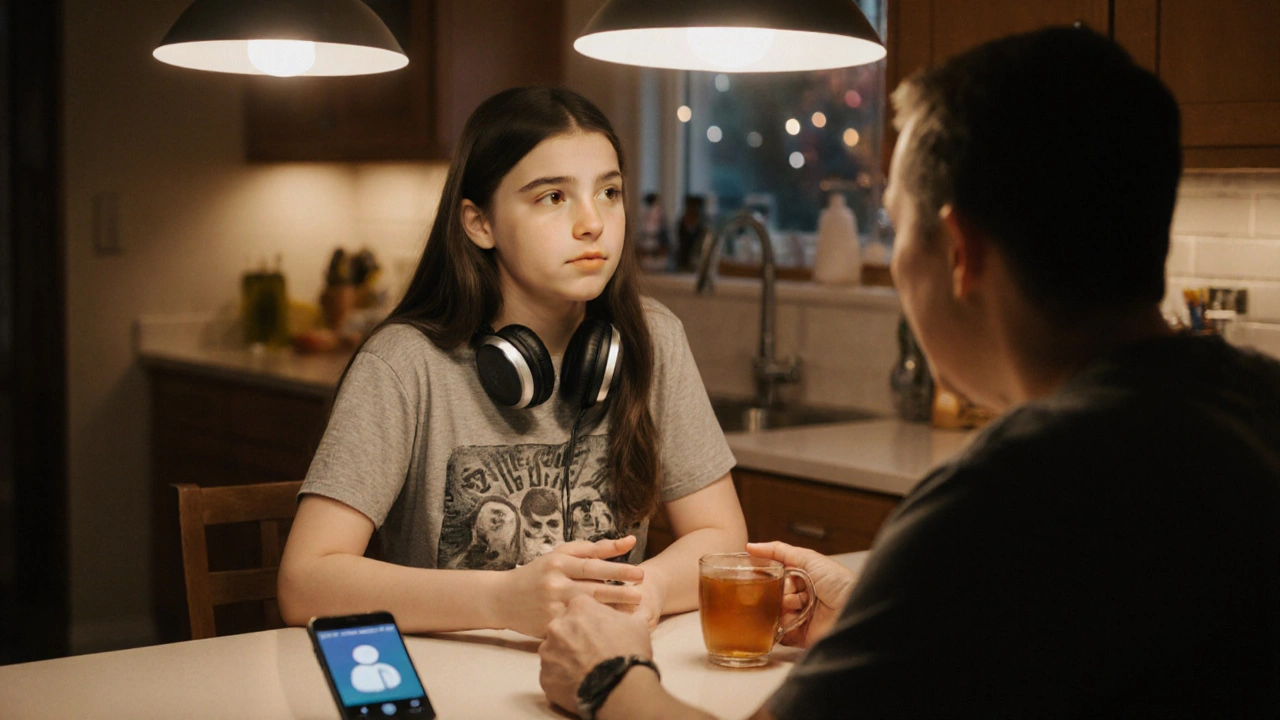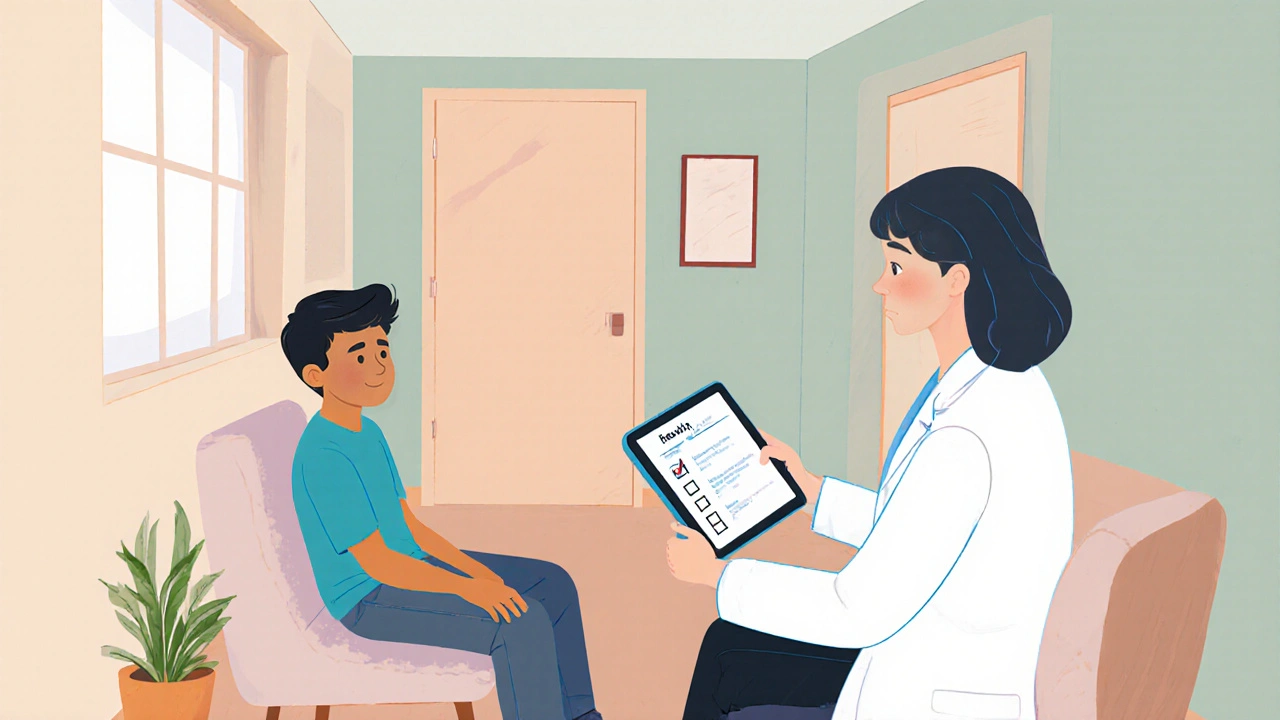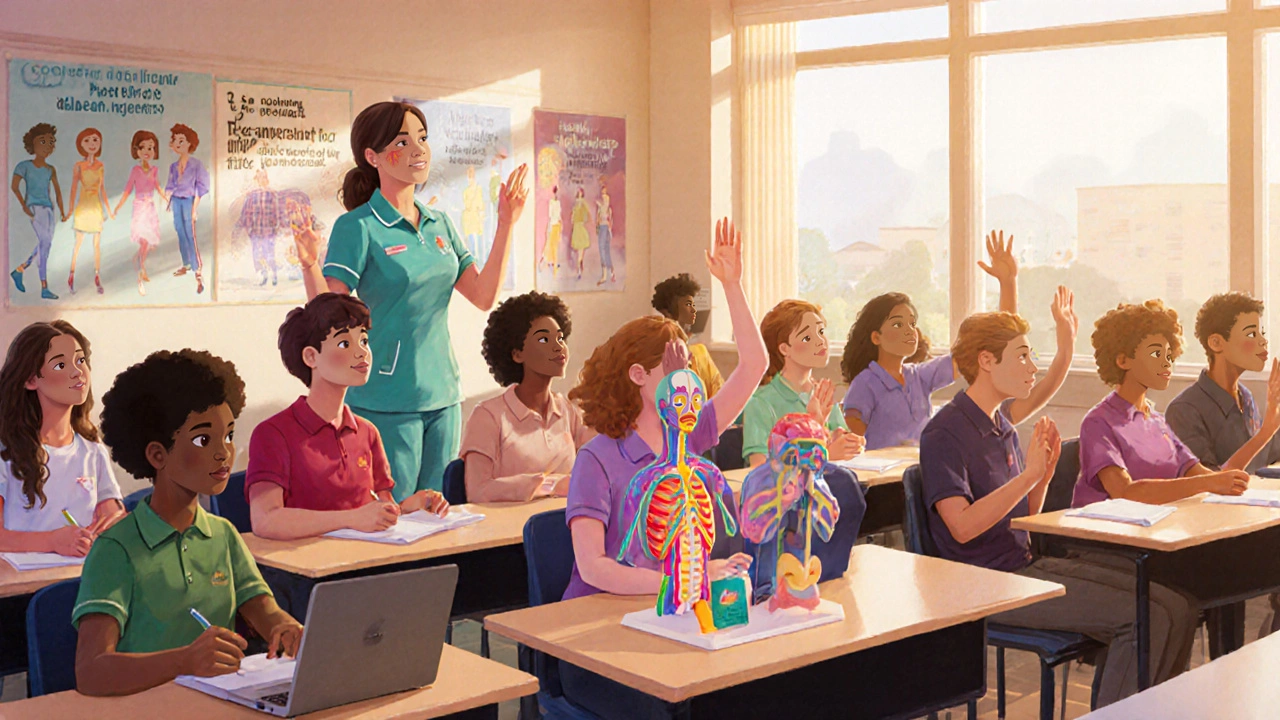Chlamydia infection in teenagers is a bacterial sexually transmitted infection (STI) that frequently affects youths aged 15‑24, with a prevalence of about 5% among sexually active teens in the UK. Teens often think they’re invincible, but the health consequences-infertility, pelvic inflammatory disease, and increased HIV risk-are very real. This guide shows how education, simple preventive steps, and timely testing can keep chlamydia rates down.
Why chlamydia matters for teens
According to the Centers for Disease Control and Prevention (CDC) US public‑health agency that tracks STI trends, chlamydia is the most reported STI among adolescents, accounting for roughly 1.7million cases annually in the United States alone. In the UK, Public Health England reports a 20% rise in teenage diagnoses over the past five years. The infection often runs silently-up to 70% of girls and 50% of boys show no symptoms-making early detection critical.
Understanding transmission and symptoms
Chlamydia spreads through any sexual contact that involves exchange of genital fluids, including vaginal, anal, and oral sex. The bacterium Chlamydia trachomatis attaches to the lining of the cervix, urethra, rectum, or throat. Common symptoms, when they appear, are painful urination, abnormal discharge, and lower‑abdominal pain. In girls, untreated infection can damage the fallopian tubes, leading to infertility.
Key prevention strategies
Prevention is a combination of knowledge, protection, and healthy choices. Below are the most effective tools:
- Condom is a latex or polyurethane barrier that prevents sperm and pathogens from reaching the partner’s genital tract. Correct use reduces chlamydia risk by about 80%.
- Dental dams for oral‑genital contact provide similar protection for the mouth and throat.
- Abstinence or limiting the number of sexual partners cuts exposure dramatically.
- Vaccination against human papillomavirus (HPV) doesn’t prevent chlamydia but protects against other serious infections, reinforcing an overall sexual‑health mindset.
- Comprehensive sex education that covers consent, communication, and correct condom use.
When teens understand *why* a method works, adherence jumps from 30% to over 60%.
Screening and early detection
Because most infections are silent, routine screening is the backbone of control. The recommended test for teens is the Nucleic Acid Amplification Test (NAAT) a highly sensitive urine or swab assay that detects chlamydia DNA. Results are available within 48hours and the test can be performed without a pelvic exam, preserving privacy.
Many sexual‑health clinics offer confidential testing under the Confidentiality law UK legislation that allows minors to receive STI services without parental consent, encouraging teens to seek help early.
Best practice: test sexually active teens at least once a year, and more frequently if they have new or multiple partners.

Treatment options and what to expect
Chlamydia responds well to antibiotics. Two regimens dominate:
| Antibiotic | Dosage | Effectiveness | Common side effects | Contraindications |
|---|---|---|---|---|
| Azithromycin | 1g oral, single dose | ≈95% cure rate | nausea, diarrhea | severe liver disease, known allergy |
| Doxycycline | 100mg oral, twice daily for 7days | ≈97% cure rate | photosensitivity, upset stomach | pregnancy, children <12y |
Both drugs are safe for most teens, but doctors prefer doxycycline for pregnant adolescents because azithromycin’s single‑dose convenience can lead to missed follow‑up if side effects occur.
It’s essential to abstain from sex for seven days after completing treatment and to retest three months later to confirm clearance.
Role of parents, schools, and healthcare providers
Effective prevention is a community effort. The World Health Organization (WHO) global health agency that publishes guidelines on STI management recommends integrating sexual‑health curricula into secondary schools, training teachers to deliver unbiased information, and ensuring teen‑friendly clinic hours.
Parents can:
- Start open conversations early (around ages 11‑12) about body changes and consent.
- Encourage routine health check‑ups without pressuring the teen.
- Know their local sexual‑health clinic’s confidentiality policies.
Schools should provide:
- Age‑appropriate lessons that include condom demonstration.
- Access to free condoms and educational pamphlets.
- Referral pathways to local clinics for testing.
Healthcare providers must create a judgment‑free environment, use plain language, and respect the teen’s right to privacy while offering accurate information.
Practical tips teens can use today
- Carry a small packet of condoms in your bag or pocket; it’s easier than asking a friend later.
- Set a reminder on your phone to schedule an annual chlamydia test.
- If you notice any symptoms-burning urination or unusual discharge-book a test immediately.
- Talk with a trusted adult about where to get confidential testing; many schools have a nurse on staff.
- Keep an eye on your partner’s sexual health status; honest conversations reduce risk.
Remember, the best defense is knowledge combined with proactive action.
Related concepts and next steps
Understanding chlamydia opens doors to broader sexual‑health topics:
- Human papillomavirus (HPV) - another common STI that can cause cervical cancer; vaccination is a key preventive measure.
- Teenage pregnancy - often linked to unprotected sex; comprehensive contraception education can lower both rates.
- Peer influence - friends’ attitudes shape behavior; positive peer‑led programs have proven to increase condom use.
- Puberty education - helps teens recognize bodily changes and understand consent early on.
After reading this guide, you might explore a deeper dive into “Effective Sex Education Programs for Schools” or “How to Talk to Teens About Consent”.

Frequently Asked Questions
Can chlamydia be caught from oral sex?
Yes. If the partner’s throat is infected, the bacterium can be transmitted during oral‑genital contact, though the risk is lower than with vaginal or anal sex.
Do I need a prescription to get a condom?
No prescription is required. Condoms are sold over‑the‑counter in pharmacies, supermarkets, and often free at schools or clinics.
How accurate is the NAAT test for chlamydia?
NAAT is the gold standard, with sensitivity over 95% and specificity above 98%, making false negatives very rare.
Can I be treated for chlamydia while pregnant?
Yes. Doxycycline is avoided in pregnancy, but a single dose of azithromycin is safe and effective for both mother and baby.
What should I do if my partner refuses testing?
Encourage them to visit a confidential clinic; you can also get tested yourself and share the results. If they still decline, consider using condoms consistently to protect yourself.
chlamydia teens can stay healthy by staying informed, using protection, and getting tested regularly. Knowledge saves lives, and the earlier the action, the better the outcome.


 Medications
Medications
Crystle Imrie
September 26, 2025 AT 21:42Wow, another "friendly" guide that pretends teens care about condom etiquette-yeah right.
Dhananjay Sampath
September 30, 2025 AT 09:02Absolutely, education is the cornerstone, and we must remember that every teen deserves accurate, non‑judgmental information, because knowledge empowers choice, and choice reduces risk, so let’s promote open dialogue, accessible testing, and supportive resources for all.
Shelby Rock
October 3, 2025 AT 20:22i think teh whole idea of "prevention" is more than just a checklist; it’s a reflection of how society values young bodies, and if we cant talk about consent without blushing, we still got a long way to go.
kunal ember
October 7, 2025 AT 07:42The guide rightly points out that chlamydia often flies under the radar, leaving many teens unaware of their own infection status. Silent infections are a public health nightmare because they perpetuate transmission cycles unnoticed. By emphasizing routine NAAT screening, the article aligns with CDC recommendations that have proven efficacy. Moreover, the inclusion of dental dams highlights a comprehensive approach that many curricula overlook. Condoms, when used correctly, reduce transmission by up to eighty percent, a figure that underscores their importance. The statistical data presented, such as the five percent prevalence in the UK, provides a sobering context for policymakers. It is also noteworthy that the guide mentions confidentiality laws, which can alleviate parental‑permission anxieties. Adolescents are more likely to seek testing when they know their results will remain private. The discussion of treatment options, especially the comparison between azithromycin and doxycycline, equips readers with actionable knowledge. Side‑effect profiles are clearly laid out, allowing teens to make informed decisions in consultation with healthcare providers. The reference to HPV vaccination, while not directly protective against chlamydia, reinforces a holistic sexual‑health mindset. Educational institutions that adopt comprehensive sex education see higher condom usage rates among students. The guide’s suggestion to test at least annually is a pragmatic recommendation that balances frequency with practicality. In the broader social context, reducing chlamydia incidence can also diminish associated stigmas and improve mental health outcomes. Ultimately, the guide serves as a valuable tool for educators, clinicians, and teens themselves, fostering a generation that is both informed and proactive.
Kelly Aparecida Bhering da Silva
October 10, 2025 AT 19:02It’s clear that the global health agencies are pushing a hidden agenda-using chlamydia statistics to justify intrusive screening programs that erode family values and national sovereignty.
Michelle Dela Merced
October 14, 2025 AT 06:22🙄 Seriously? The guide is just another propaganda piece, but sure, let’s blame the "system" while ignoring personal responsibility 🙃💥
melissa hird
October 17, 2025 AT 17:42Ah, a splendid exposition on teenage sexual health-nothing says "cultural enrichment" like a lecture on condoms and testing, delivered with all the subtlety of a marching band.
Charu Gupta
October 21, 2025 AT 05:02While the guide is informative, it contains several typographical oversights: “teens” should be capitalized in titles, and “NAAT” ought to be introduced before first use; nevertheless, the content remains valuable. 😊
Alex Iosa
October 24, 2025 AT 16:22The emphasis on confidential testing conveniently coincides with recent legislative bills that aim to normalize surveillance under the guise of public health.
Jonathan S
October 28, 2025 AT 03:42One cannot help but observe that many of the recommendations presented are, frankly, elementary-condoms prevent disease, testing detects infection, and antibiotics treat it 📚. Yet, the guide seems to assume that teens are incapable of basic reasoning, which is a patronizing stance that undermines their agency. Moreover, the narrative neglects the socioeconomic barriers that many adolescents face, such as lack of access to free clinics and insurance coverage, which are critical factors in adherence to testing schedules. Additionally, the assertion that “abstinence cuts exposure dramatically” is technically true, but it ignores the complex realities of human relationships and the role of comprehensive education in fostering informed decision‑making. Finally, while the data presented is accurate, the tone lacks the nuance needed to engage a diverse teenage audience, reducing the potential impact of this otherwise useful resource. 🙄
Jon Shematek
October 31, 2025 AT 15:02Yo guys, this guide is fire! Spread the word, get tested, and stay safe-let’s own our health like champs! 💪
Beverly Pace
November 4, 2025 AT 02:22Honestly, the guide oversimplifies a complex issue and could mislead well‑meaning teens.
RALPH O'NEIL
November 7, 2025 AT 13:42I've noticed that many schools still skip the dental‑dam section, even though it's a low‑cost way to protect oral health during oral‑genital contact.
Mark Wellman
November 11, 2025 AT 01:02Ugh, where do I even start? The whole thing feels like a half‑hearted attempt at being "hip," but it’s really just a laundry list of boring medical facts tossed together with zero vibe. Like, who writes “Nucleic Acid Amplification Test” and expects teens to be wowed? Nobody, that’s who. And the whole “confidential testing” line sounds like a sales pitch from a clinic that’s more interested in keeping its revenue stream than actually caring for youths. Plus, the guide never talks about the emotional fallout-yeah, the trauma of a positive result, the stigma that follows, the awkward conversations at school. It’s all about the numbers, the percentages, the percentages again. Honestly, if you wanted real help, you’d include stories, coping strategies, maybe a meme or two. But nope, just dry stats. 🙄